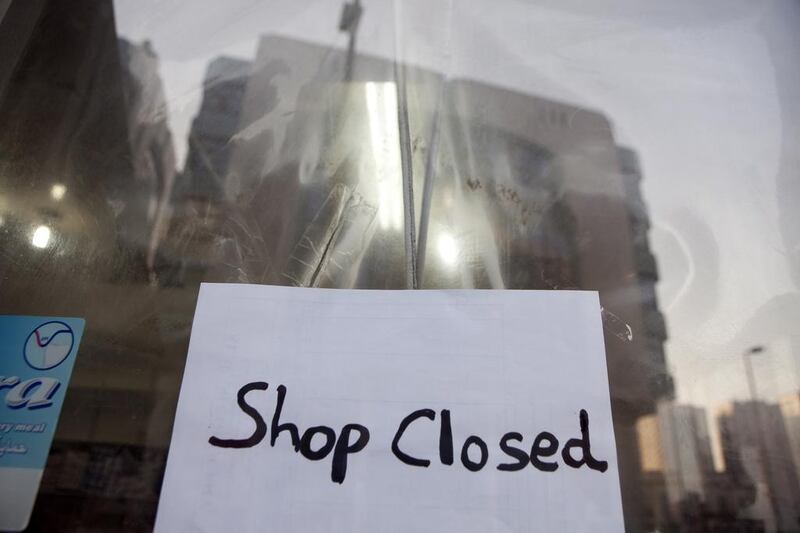A draft of the federal bankruptcy law recently approved by the UAE Cabinet is a very welcome development and is expected to yield significant economic benefits.
It also fits well with the UAE Vision 2021 National Agenda, one of whose targets is to make thecountry “the world’s first in ease of doing business” – a spot that, as per the World Bank’s Doing Business 2016 report, is held by Singapore. The UAE ranks 31st overall out of 189 countries, but is as low as 91st in Resolving Insolvency, one of 10 applicable criteria.
The proposed new law should change that, but its effect on the rankings won’t be instantaneous. There will need to be real evidence of improvement in terms of time to resolve insolvency, cost of insolvency to debtors and recovery rates. According to the World Bank report, resolving insolvency in the UAE takes on average 3.2 years, costs 20 per cent of debtors’ estate and yields an average recovery of about 29 cents on the dollar.
Compare these with Singapore and Japan, where it takes less than a year to complete the legal proceedings, with low single-digit cost and roughly 90 per cent recovery. The table below gives more data to show the challenge ahead.
So here are some related practical measures that could help the UAE match such outcomes:
• Rapidly build the commercial courts: it is well within the UAE's capability to build the judicial infrastructure required to support the implementation of the law. This requires a greater number of courts, overseen by judges well-versed in the nuances of commercial disputes and the perspectives of debtors and creditors. If outside judges were brought in, not only could they kick-start the application of the new law and develop case precedents, they could also help local judges acquire such knowledge and experience.
The commercial courts could also adopt the latest case-management and court-automation practices, which set time standards for key court events, adjournments and continuances. Technology can further be utilised to automate court process.
• Implement the law at the earliest and drive improvements based on market feedback: the UAE Cabinet approved the law on September 4, 2016. We now understand that the law will bypass the Federal National Council (FNC) and be sent directly for the President's signature. Then, three months after notification in the official gazette, it will come into effect.
In the medium term, the law makers should seek feedback from market participants and bring necessary changes to align the law to global best practice. These might include:
1. Offering debtors and creditors different options as to how, when and whether to bring legal action, as it might make more sense for both parties to opt for a reorganisation.
2. Allowing business operations to continue during reorganisation or bankruptcy proceedings: these may even include borrowing additional funds to support operations and was used in the widely reported case of Japan Airlines in 2010.
3. Giving creditors a say on important decisions during bankruptcy proceedings, such as the appointment of an administrator, the sale of assets or access to information about the business. Under Swiss insolvency law, creditors can reject the administrator appointed by the court.
• Develop and regulate insolvency professions: where the business has to be liquidated, the court will most probably appoint an insolvency professional to manage the winding up process and distribute the proceeds as per the prioritisation set in the law. Such professionals have to be developed and regulated to ensure compliance with the law.
• Other key enablers: in addition, various other supporting infrastructure may be required, such as a centralised registrar of securities, a centralised credit bureau or a department of company affairs.
As the system evolves, it will become apparent whether its nuances make the law more favourable to debtors or creditors, but the speed at which such measures are implemented will determine how quickly the UAE’s Resolving Insolvency parameters are improved.
The Doing Business Report 2013 identified Poland as an example of those that made the biggest improvements since 2005. It took Poland six years to reduce the cost (as a percentage of estate) by a third and to double the recovery rate.
Poland’s costs (as a percentage of estate) and recovery rate (cents on the dollar) in 2006 were very similar to where the UAE is today. The incremental reforms that took Poland six years were made largely under the guidance of Jacek Rostowski, an LSE-trained economist, during his tenure as finance minister.
If the UAE aspires to be on top of the Ease of Doing Business table in 2021, it will likewise have to dramatically improve the efficiency of its bankruptcy proceedings over the course of the next five years.
Bharat Gupta, a chartered accountant by training, is a senior director with the professional services firm Alvarez & Marsal in Dubai.
business@thenational.ae
Follow The National's Business section on Twitter





